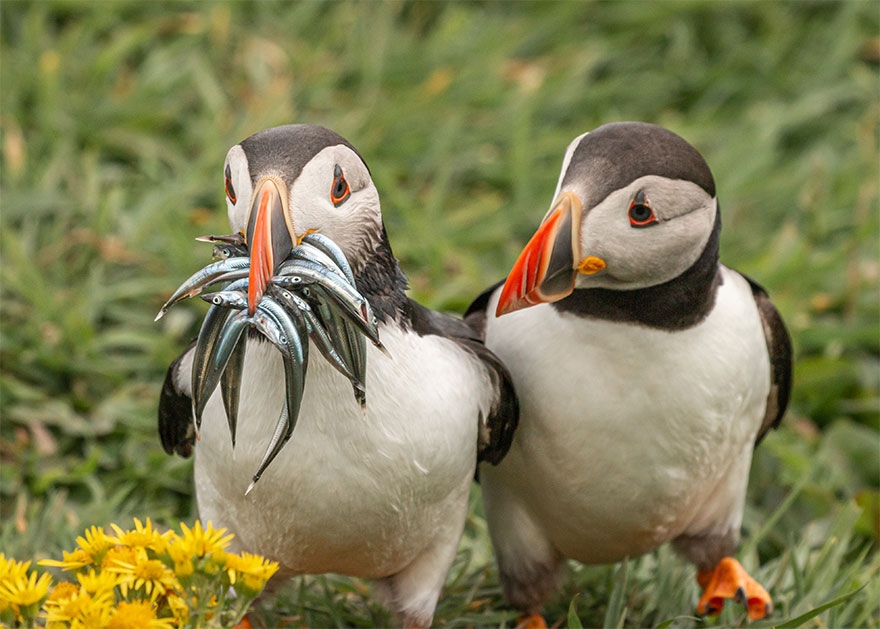Arctic Puffin (Fratercula arctica): The Charismatic Seabird of the Northern Waters
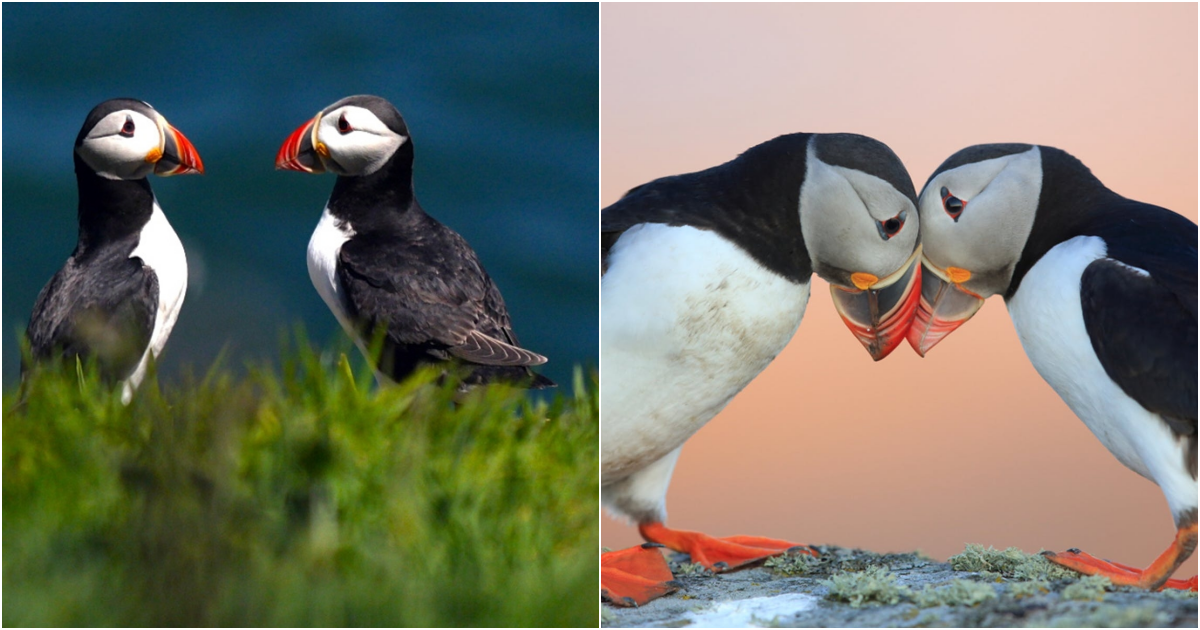
The Arctic Puffin, scientifically known as Fratercula arctica, is a species of seabird that belongs to the Alcidae family. These adorable birds are known for their distinctive appearance and charming behaviors. With their colorful beaks and comical way of walking, Arctic Puffins have captured the hearts of nature enthusiasts and birdwatchers worldwide. Let’s explore more about this fascinating species.
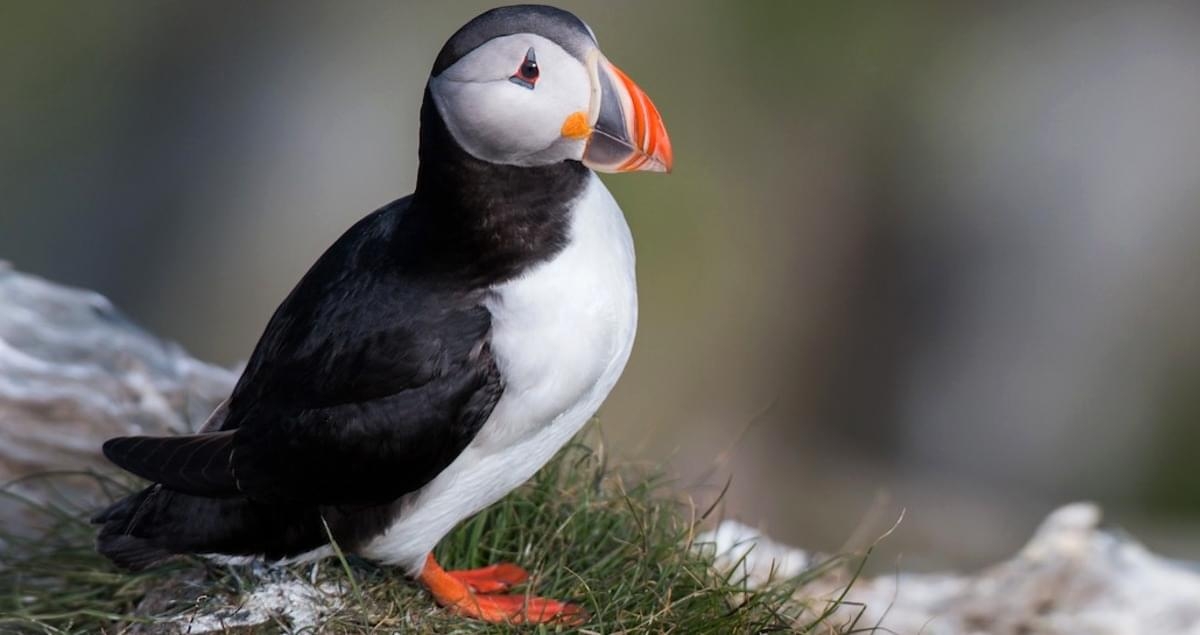
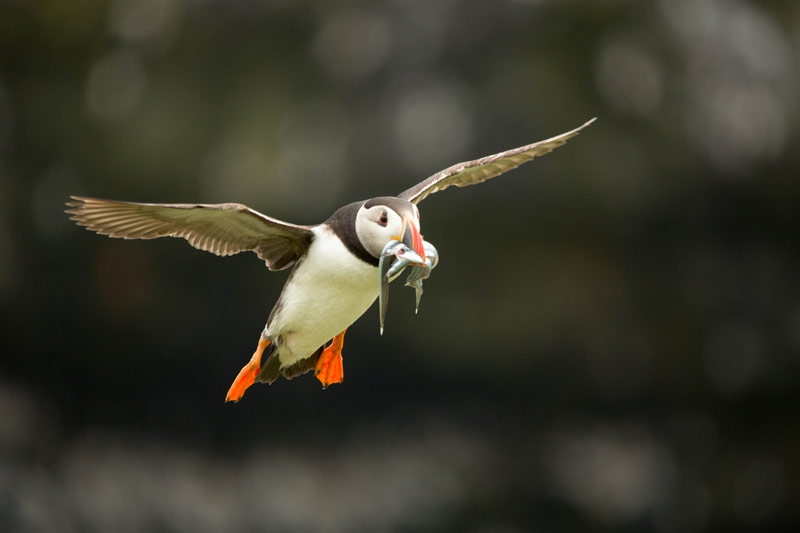 Arctic Puffins are native to the northern regions of the Atlantic Ocean, particularly the Arctic and sub-Arctic areas. They are commonly found in countries such as Iceland, Norway, Greenland, Canada, and the northeastern United States. These birds spend the majority of their lives at sea, only returning to land during the breeding season. They nest in colonies on coastal cliffs or in burrows dug into the ground.
Arctic Puffins are native to the northern regions of the Atlantic Ocean, particularly the Arctic and sub-Arctic areas. They are commonly found in countries such as Iceland, Norway, Greenland, Canada, and the northeastern United States. These birds spend the majority of their lives at sea, only returning to land during the breeding season. They nest in colonies on coastal cliffs or in burrows dug into the ground. 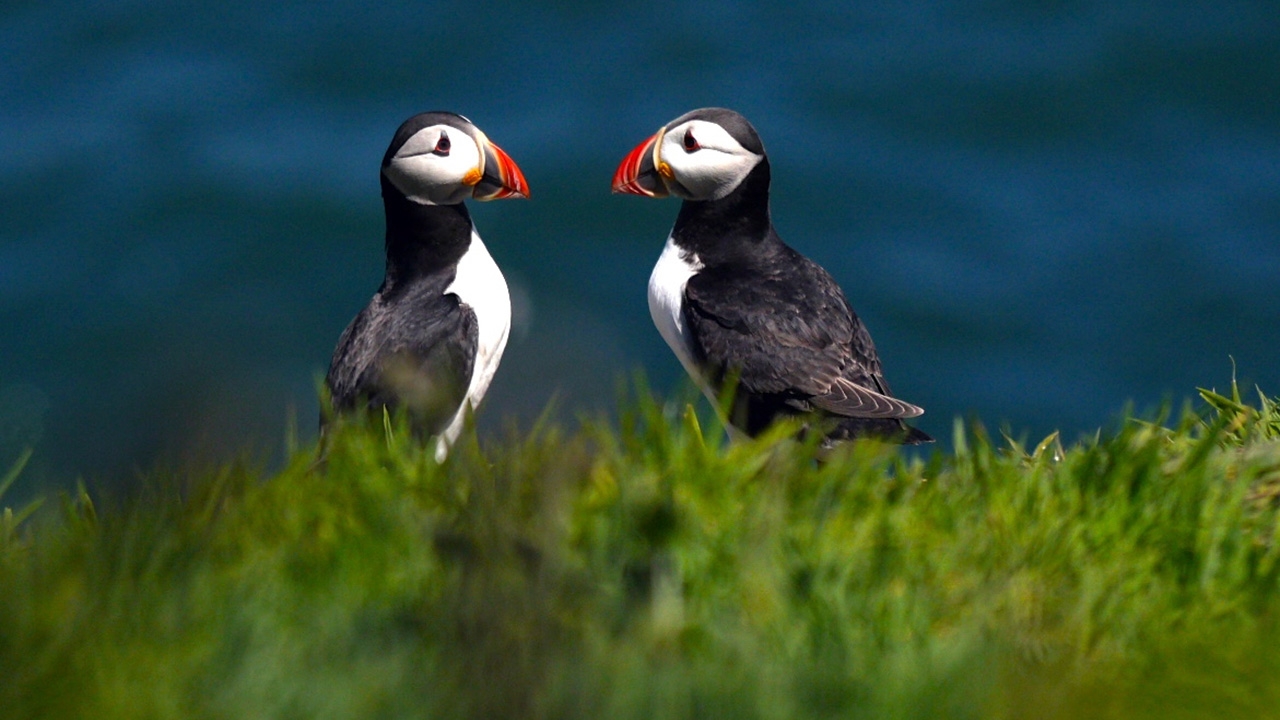 Arctic Puffins are well-adapted to marine life and are skilled divers. They primarily feed on small fish, such as herring, sand eels, and capelin. With their specially adapted beaks, they can catch and hold several fish at once, allowing them to bring a sufficient food supply back to their chicks. Puffins are known to dive up to 60 meters (200 feet) deep to catch their prey, using their wings to “fly” underwater.
Arctic Puffins are well-adapted to marine life and are skilled divers. They primarily feed on small fish, such as herring, sand eels, and capelin. With their specially adapted beaks, they can catch and hold several fish at once, allowing them to bring a sufficient food supply back to their chicks. Puffins are known to dive up to 60 meters (200 feet) deep to catch their prey, using their wings to “fly” underwater. 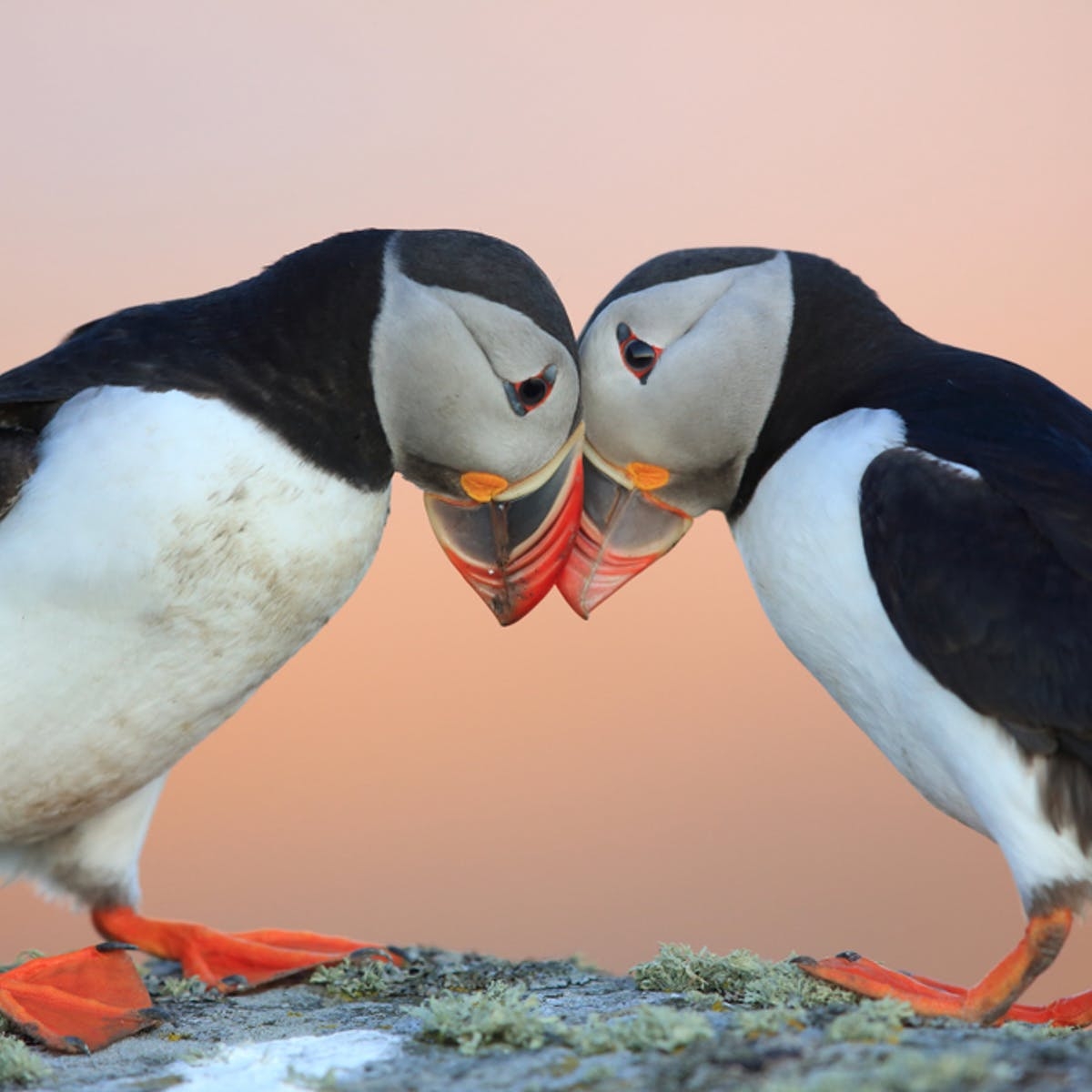 Breeding season for Arctic Puffins typically occurs from late spring to early summer. These birds form monogamous pairs and return to their nesting colonies each year. The female lays a single egg, which both parents take turns incubating for about 40 days. After hatching, the chick stays in the burrow and is fed by its parents for around 6 to 7 weeks until it is ready to fledge. Once the chick is fully grown, it leaves the burrow and heads out to sea.
Breeding season for Arctic Puffins typically occurs from late spring to early summer. These birds form monogamous pairs and return to their nesting colonies each year. The female lays a single egg, which both parents take turns incubating for about 40 days. After hatching, the chick stays in the burrow and is fed by its parents for around 6 to 7 weeks until it is ready to fledge. Once the chick is fully grown, it leaves the burrow and heads out to sea. 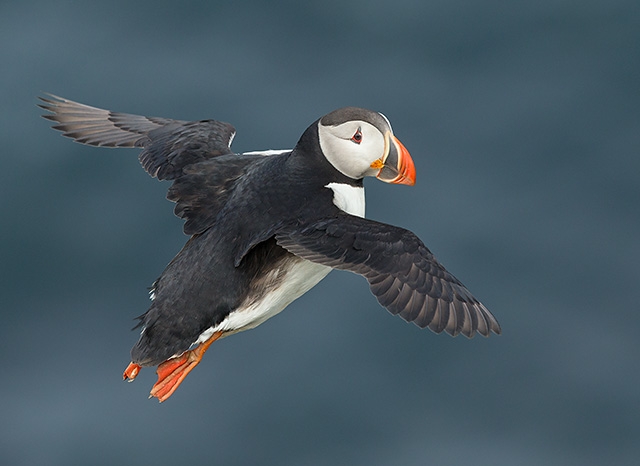 The Arctic Puffin population is currently stable, but they face several threats that could impact their future. Climate change is a significant concern as it affects the availability of their primary food sources. Pollution, overfishing, and oil spills also pose risks to their habitat and overall well-being. Conservation efforts, including the protection of nesting sites and the implementation of sustainable fishing practices, are crucial for the long-term survival of this species.
The Arctic Puffin population is currently stable, but they face several threats that could impact their future. Climate change is a significant concern as it affects the availability of their primary food sources. Pollution, overfishing, and oil spills also pose risks to their habitat and overall well-being. Conservation efforts, including the protection of nesting sites and the implementation of sustainable fishing practices, are crucial for the long-term survival of this species. 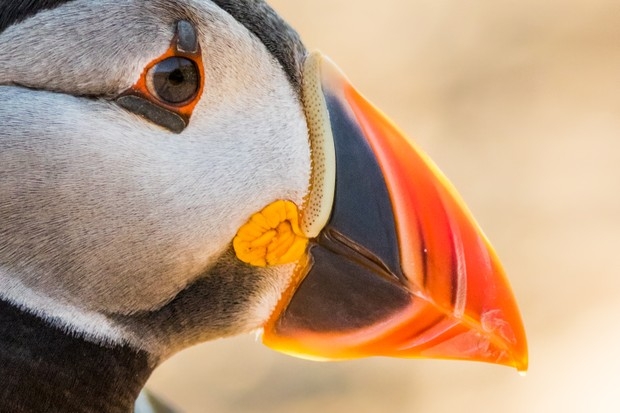 The Arctic Puffin, with its distinctive appearance and endearing behaviors, is a beloved seabird found in the northern waters. Their colorful beaks and comical nature make them a favorite among bird enthusiasts. By understanding their unique characteristics and the challenges they face, we can contribute to their conservation and ensure the continued existence of these charismatic birds for future generations to admire and cherish.
The Arctic Puffin, with its distinctive appearance and endearing behaviors, is a beloved seabird found in the northern waters. Their colorful beaks and comical nature make them a favorite among bird enthusiasts. By understanding their unique characteristics and the challenges they face, we can contribute to their conservation and ensure the continued existence of these charismatic birds for future generations to admire and cherish. 